In 1980, a young 19-year old woman stepped out of her flat in London’s Earls Court and, like millions of other drivers that morning, walked towards her car. Parked at the side of the road, the Austin Metro was the car of the moment and still a rare sight. It put a skip in its driver’s step, with burgundy-red paint finished with a pair of white coachstripes, and although its L specification wasn’t the top-of-the-range trim, the driver wasn’t fussed. After all, the Metro had been gifted to her by her boyfriend, the Prince of Wales.
Diana Spencer put the key in the lock, opened the door, climbed in, pulled out the choke lever and started the engine. Photographers surrounded the little Metro, catching her every move, smile and hand gesture. Then she dipped the clutch, selected first gear and promptly stalled.

The paparazzi loved it. She flashed another winning smile, then set off for work at the Young England kindergarten, in London’s upmarket Pimlico.
That particular Austin Metro became known as the courting car. And its association with Diana and Charles was quite possibly the greatest PR coup Leyland Cars had ever scored. That’s probably why it feels like only yesterday – yet it was forty years ago that the successor to the Mini first took to Britain’s roads.
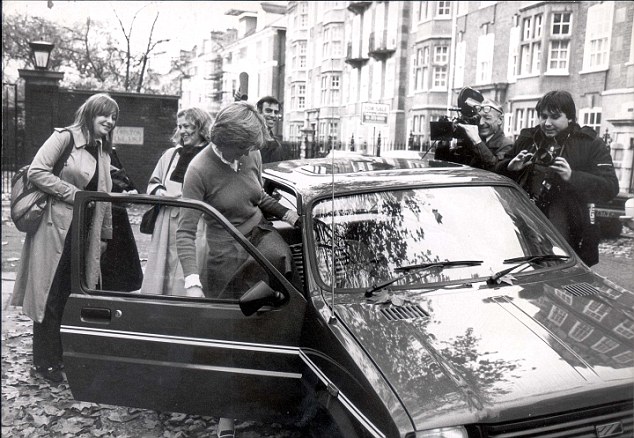
Born to fend off an increasingly strong European threat to the British Car Industry and to drag Leyland Cars into the modern age, the humble Austin miniMetro (to give it it’s official name) enjoyed a production run of 18 years, during which it underwent three name changes and four facelifts to remain a constant best-seller in the UK’s sales charts.
It was eventually killed off – by now known as the Rover 100 – following a high profile and alarming performance in Euro NCAP crash-safety tests, but not before it had wormed its way into the affections of millions of British owners. Here, on its 40th birthday, Hagerty raises a glass to what was once BL’s Great White Hope.
During its development in the late ’70s, the Austin Metro was known as ‘Leyland Cars 8’ or LC8 project. At the time, the company was in public ownership and the new supermini was considered critical as a way return the company to private ownership.
That goal partly explains why Leyland Cars never went ahead and developed other models including the Rover SD1 estate, Metro saloon and a properly facelifted Allegro. Such projects were cancelled to divert resources into ensuring the Metro hatchback would be a success.
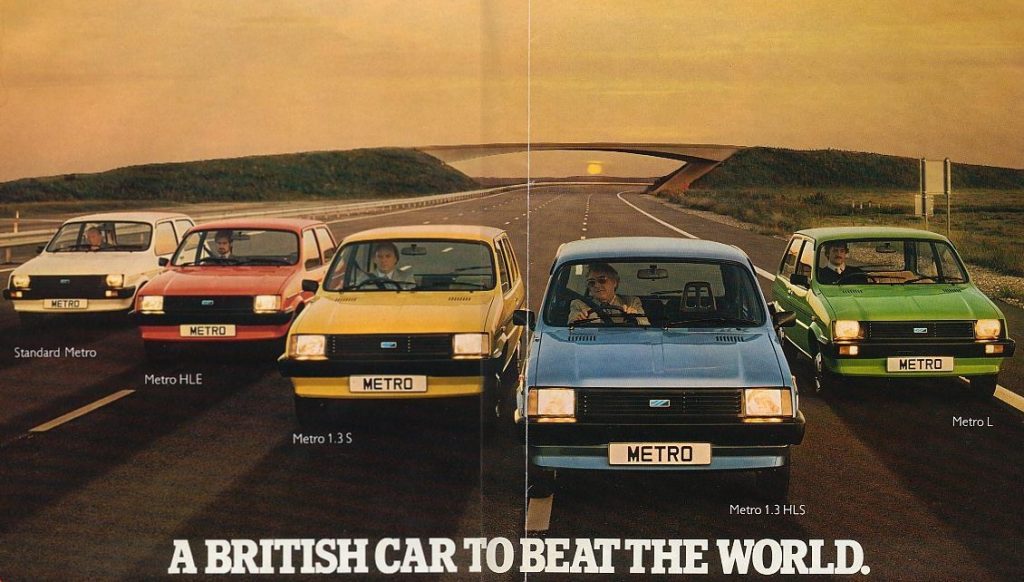
The first spy shots of the Metro appeared in CAR Magazine in 1976, but following a number of customer clinics and some negative feedback from the spy shots, a hugely expensive and very hasty restyle was called for, wiping out funds for other projects.
Fresh faces were brought into the styling team under the leadership of David Bache, who styled the Rover SD1, though much of the Metro’s final appearance was the work of Allegro designer Harris Mann. The new look was more balanced, with a modern slanted nose, compact yet smart dimensions and distinctive swage lines and a styling ‘scallop’ in the bonnet. The latter, depending on who you believe, was added after Bache dictated that the car be made 1.5 inches wider, as it was the easiest way to accommodate the additional breadth into tooling that had already been partly commissioned.
At its debut in October 1980, the Austin Metro was a breath of fresh air. Remember, this was a time when drivers could still buy a new Maxi. The Mini we’ll forgive for its cuteness, but the larger hatchback was uncompromisingly outdated when you consider that – towards the end – it was a rival to the Vauxhall Cavalier Mk 2.
The Metro, though, was a bright new dawn. It retained BL’s trademark Hydragas suspension, front-wheel-drive and bus-like steering wheel but the cabin was spacious and well laid-out. With money being tight, many of the controls were pulled from the BL parts bin, but it still managed to be fresh and modern. There were also some neat design touches such as a parcel shelf that stowed away into the seat back when not required. It also had class-leading boot space and surprisingly nippy performance, especially if you pushed the boat out for the 1,275cc 1.3 ’S’, later accompanied by the MG Metro. The MG, introduced in 1983, was much of the same, but with added red seatbelts and side graphics. If you wanted to terrify yourself properly there was even a turbo version. This was the ’80s, after all…
In 1981, the Metro won a Design Council award and was billed as Car of the Year by all of the major British automotive media, making it probably the most successful British car launch to date. It was flying out of dealerships like toilet roll ahead of a national lockdown.
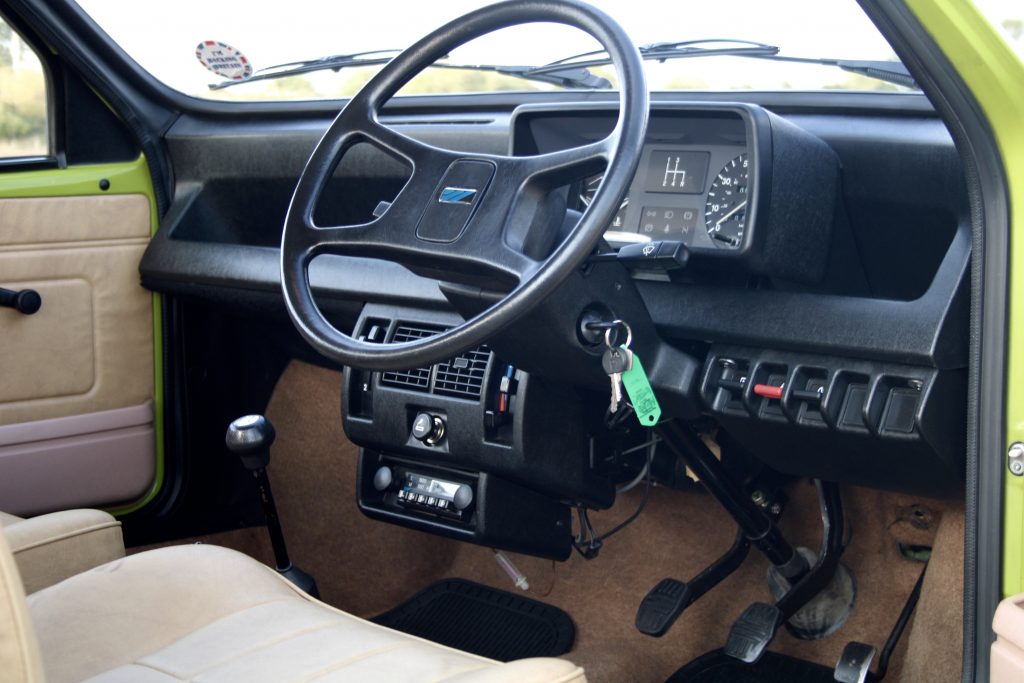
At the same time, with the mainstream Austin Metro (the ‘mini’ badging disappeared soon after launch) going great guns and the dealer network thanking BL for finally giving them something they didn’t have to apologise for selling, we got the Metro Vanden Plas – a poshed-up Metro with walnut door cappings and sumptuous velour (or optional leather) trim. The Holy Grail of Metro ownership is the all-black Metro Vanden Plas 500, which was super-posh and even came with a bottle of champagne and, in the days before GDPR regulation was on anyone’s mind, a press release to the local newspapers and radio stations to tell them you’d bought one.
The pace of progress in the Eighties was rapid in the car industry, though. By 1984, the Metro was already getting a facelift, with a new five-door option, plastic body-coloured bumpers on higher spec models, different ‘metric’ wheels (which would go on to become a headache for tyre suppliers and owners everywhere) and a revised cabin, ensuring that the little car would remain competitive for the rest of the decade. The new dashboard was especially welcome as it did away with the Seventies parts-bin bits that were a criticism of the original. It also formed the dashboard for the MCW MetroCab, the new taxi for the 1980s that was related to the Austin Metro in nothing but name and shared switchgear.
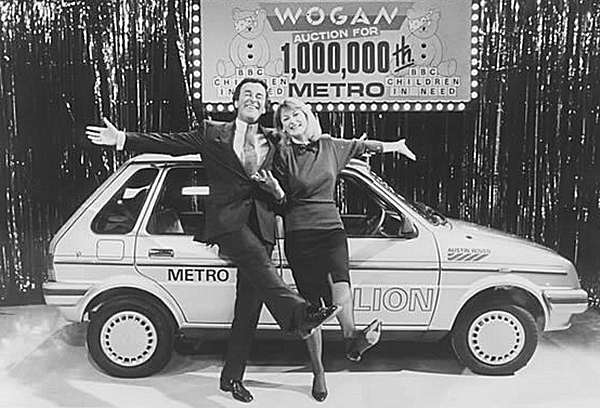
Metro continued to sell well but by the late Eighties it was losing its grip. Newcomers such as the Fiat Uno and Renault 5 Supercinq, not to mention the wonderful Peugeot 205, did things the Metro did that little bit better. It was enough to make the Metro cry – quite literally, as tear-shaped rust stripes started to adorn the front wings of almost every example thanks to an inherent rot trap.
Then there were the politics. Leyland became Austin-Rover, and by 1988 was ready to be sold into private ownership once again. The lucky benefactor was British Aerospace, whose masterplan was to ditch the Austin brand altogether and relaunch ‘Rover Group’ as a premium brand – something it believed it had the capacity to do thanks to the soon-to-come (and utterly brilliant) 200 ‘R8’.
For two years, Metro sat awkwardly with no brand behind it. You could go into your local Rover dealership and buy one, but it was badged simply as ‘Metro’ as it wasn’t considered posh enough to be a Rover. Nothing like giving customers confidence in your product.
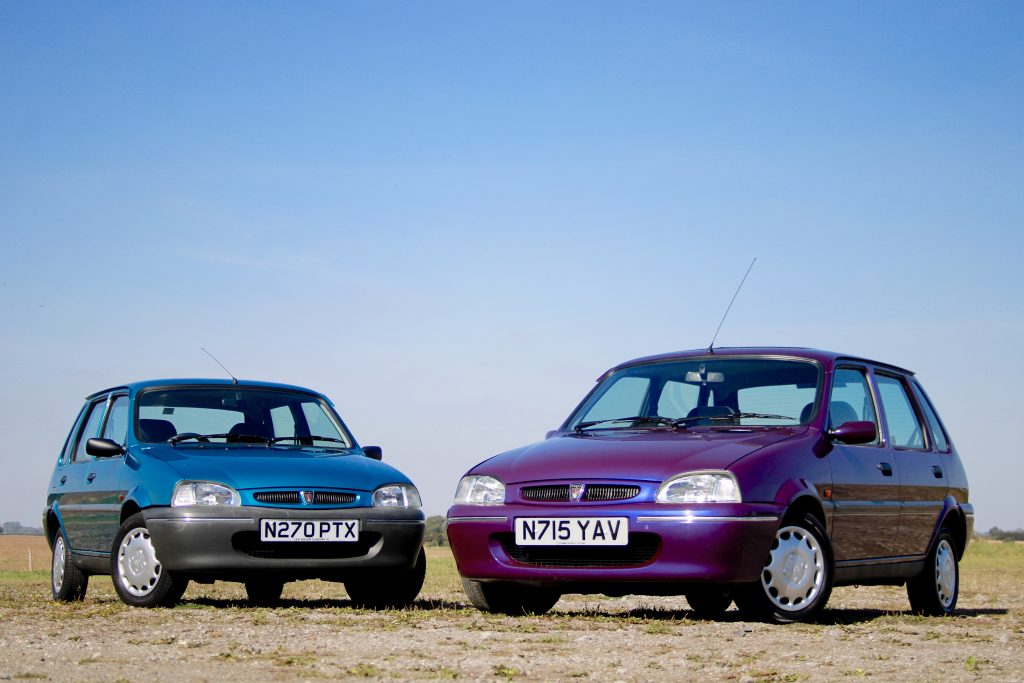
All that changed, though, when the ‘new’ Rover Metro came along in 1990. It was billed as an all-new car, with much made of its K-Series engine (which powered many a Caterham Seven, although not the record-breaking JPE) and its shift upmarket, but in reality the Metro still used the same bodyshell as the very first model, which had appeared 10 years earlier. The glass and door frames were the same, too, as was the roof panel and inner tailgate structure.
The suspension was basically the same, but there was a crucial improvement. The Hydragas units were finally interconnected front to rear, as had been originally planned a decade before but dropped on cost grounds. This actually made the Metro class-competitive in terms of ride and handling once again.
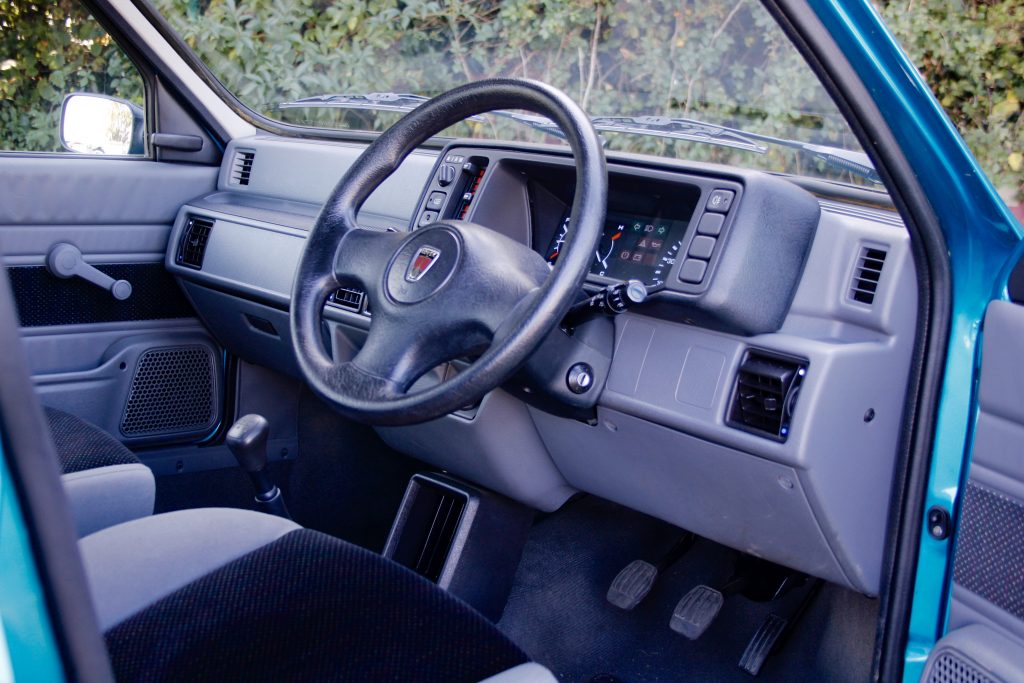
Amid this, there were some gems. The GTA and GTi models were great fun, especially the 16-valve GTi, which surprised many a hot hatch driver with its peppy performance. Yet again, the Metro won awards, though it was arguable that by 1990 this had as much to do with the car’s abilities as it did the generous marketing budget and PR department’s expense account. Despite its improvements it was still inferior to modern contemporaries such as the Renault Clio.
By 1993 there was a revolution in the supermini market which gave motorists the Fiat Punto, the Vauxhall Corsa, a new British-built Micra and a posh new Polo. The Metro’s resurgence was short-lived, and no amount of special editions such as the ‘Rio’, ‘Tahiti’, ‘Nightfire’ and ‘Quest’ were enough to bring buyers to showrooms.
The final revisions came in 1995, when the Metro name was dropped and the car became known as the Rover 100 to fall in-line with the rest of the company’s naming strategy. But by then it was both an anachronism and a bit of a joke. Who can forget Alan Partridge’s riposte when asked why he was driving a miniMetro: “They rebadged it, you fool!”
Rover tried its hardest, capitalising on its more traditional customers who were loyal to the brand or perhaps downsizing from bigger Rovers to match their new pension-pot income. Posh ‘special editions’ that were essentially part of the range, such as the Knightsbridge and Kensington, gave it sufficient showroom appeal to keep the Daily Mail heartland happy.
However, the writing was already on the wall when the Rover 100 was slammed into it at 30mph. The resultant carnage gave Rover the worst ever Euro NCAP crash-safety rating and put the willies up customers, including some who’d laid down a deposit.
It was 1998 and the Metro story came to an abrupt end after Rover Group agreed to stop production – an ignominious end for what was once arguably the best British car ever made.
Today, though, the Metro enjoys a cult following, especially among younger car enthusiasts. Many members of the Metro Owners Club are considerably younger than their cars and the model enjoys a great social scene and a strong presence on Twitter, Instagram and Facebook – something that the car’s creators could never have foretold, but ought to be proud of.
For despite its shortfalls in later life, the Metro really was a British car to beat the world – one that came with the Royal seal of approval.









LC10 was the Maestro not the Metro that was LC8 MG Metro launched May 1982 not 1983, Maxi out of production and old stock by the time J Car Cavalier was launched, MG Metro did not replace 1.3S the two models ran alongside each other and the 1.3S became 1.3HL, metric wheels for 84 model year not 1985…..well written with some dodgy facts!
Edit
Well spotted, Colin. And thank you for pointing it out. A slip of the mind in amongst Austin’s internal codenames. Glad you enjoyed the story, though, and always good to see the Metro celebrated.
As you rightly say, the Metro was intended as a replacement for the Mini range. It speaks volumes that Mini production carried on for a couple of years or so after Metro production ceased.
Awful, the worst car after the Marina!
always wanted one at the time.
We were dealers at the launch our show car was so bad paint wise we had to park it close to the showroom wall. We asked why it was not rejected at final inspection because if to any were rejected the workforce would strike
The Metro stalled on its first day, just like Lady Diana’s first attempt to drive it.
Too much Union interference killed it, together with too many Friday jobs.
I don’t know where you got your information, but your history is lacking.
I tried to learn to drive in a G reg BSM Metro but found the things wasn’t intended for people with long limbs.
My gangly seventeen year old knees would be bashing the ignition key and gearstick as it hopped around like a go kart.
After two lessons, the instructor and I had to abandon the wretched thing and use my mum and dad’s MK1 Golf instead.
The metro was one of the worst cars ever made. They rusted faster than they went and looked awful. The mini was beautiful in comparison and that’s why the mini is an icon and the metro an eyesore. This really was the end of the British production car industry, no new ideas and dreadful products that were so dated. Such a shame that poor management and lack of investment killed our once world leading car industry.
Quite a fun car when it worked! Handling was good as were the brakes. Paint and quality awful. The only car (MG model) that I had to wear my raincoat inside when it rained as the factory fitted sunroof leaked throughout my ownership. When it worked it was great, pity it had so many faults. I replaced it with a Fiesta XR2. Enough said.
The Metro was another appalling example of a cobbled together design. A British embarrassment by any standard.
Desperately poor car, only praised by it’s makers. I had 2 for good measure as a driving instructor.
Only realised how bad it was when changed to something else.
Had a metro as my first car and a 100 as my second. Great fun to drive as you just kept your foot to the floor and threw it into corners. You’ve missed out the 1.8l special edition GTi that was made by a performance company when an experimental 1.6l failed production and the lot where sold off cheap to them. It used the same engine as the mgf and Elise (all k series). The mgf even used the metro front subframe as it’s rear one (with extra bits for conventional suspension).
Also don’t forget the 6r4 rallycross car (which had a meastro floorplan)!
Worst car ever!
One of the worst cars ever made…fact!
Describing the Metro as ” . . arguably the best British car ever made” in the paragraph after reporting that it had ” . . the worst ever Euro NCAP crash-safety rating . .” explains a lot about the decline of the British (owned) car industry. The failures of the manufacturers were covered up by a press that didn’t want to be accused of being unpatriotic.
Oh well. Brexit will take us back to those Halcyon days.
I was a Triumph Herald & Vitesse fan but tried a Metro even though people called it, it served me really well, towed a Fisher Petite caravan (made in Hull), economical to run. I took it to a mini specialist in Colne for a new wing and respray, they destroyed it, had it treated with Waxoyl and they never prepared it just sprayed paint on top of Waxoyl. Had to get it dirty and PX for a Micra. I liked the Metro, some times I wish some of the old cars were available today but without the rust problems of years ago.
Any of the bad workmanship down to Red Robbo and co. or did the management work the production lines ??
I had a Mini Metro (also a lovely 2.3 Rover SD1 second hand before it) shared with my late partner. Yes she crashed it, but got it repaired.
Then I bought a Rover Metro Tahiti (Tahiti Blue) from new. Had it first as my main car (while my partner got an admittedly nice BMW from work).
It handled really well, better than a Corsa Mk2 I bought as next main car (still running now as a second car after 17 years from new). Must admit I never drove a Clio.
Becoming my second car, the lovely Tahiti lasted very well, without significant rust problems. And few mechanical problems throughout.
Eventually scrapped it for £90 after a GRAND TOTAL OF 23 YEARS OF OWNERSHIP because the underside needed too much work (not surprising: how many other cars last 23 years).
Soon afterwards I saw it driving around Newcastle-upon-Tyne: Riverside Garage had bought it and done the work, adding advertising film to rear windows for that garage.
Okay, the crash test results were a bit worrying, not that I’d ever crash it. I swung it around a lot, but never near other cars / or maniacs.
Later Metros became popular with young drivers, I understand due to cheap insurance for them.
To me, the only problem was finding it in large car parks: you couldn’t see it behind other cars. So had to remember exactly where I parked it.
But the boot could transport a chest-height fridge-freezer at a pinch.
Also bought a Diesel Rover 100 (Kensington?) second hand before the Corsa, but it was written off by a bad-driving Taxi driver. Not too sad about that, as the diesel chugged rather than flying around like my Metro.
Wish I had my Rover Metro back again: loved it. And obviously still miss it.
Best, or best value, thing I ever bought. Can’t remember how much I paid for it, but 23 years of driving was certainly worth it.
Henry
regardless of what people say the design was a winner, it clean crisp looking roomy inside and ok to drive , at the end of its life , it looked a complete mess with so called face lifts, this car if still built to day would still sell ex rover employee
I had one as my first car a 1.3hnd if I remember. A reg. It was terrible but I still remember it fondly. I drove it late at night once and all the lights inside and out just went out. So I banged the dash really hard and on they come! Used to pop out of gear too!
everyone wanted the metro to be a success, in truth the fiesta was a better made/designed car
however making 4 million of them shows how buyers brought into the image
the metro was never intended to replace the mini as late 70s ads show “like bostik its going to stick around”
plans were made in the mid 80s to stop mini production- one small problem ,BLs best selling model..
Brought a 2nd hand 1990 Metro Advantage 1275, ( a base model with turbo body kit wheels and suspension) as a stop gap in about 2000 for £500, when my previous 2nd cars engine expired. Kept it for about 3 years and sold it on cost me practically nothing to run and still got £300 when it left my ownership, and I have to say it really surprised me it was a fun little thing to throw around the country lanes I used to get to work, it had its issues but so did most cars of its era
I recall other rot boxes in that era including Mk1 Golfs, Datsuns, Toyotas etc. The Metro was a near revelation in packaging terms at the time and far better than the usual band of Leyland knockers and Clarkson will admit. Its funny how prestige german manufacturers get away with making unreliable products but never seem to get the slating BL did. That’s the middle classes for ya.
We had six 1.3S at the company I worked for delivering specialist photographic films to industry doing about a thousand miles a week each.
They were fast but that that was about all you could say for them, just dreadfull reliability.
Everyone broke down with the same faults at the same mileage, you could have set your watch by them.
Engine management broke down on me on the M3 just as I passed under M25 heading to Sunbury. AA was unable to fit ridged tow to tow eye due to poor design so had to tow me with strap all the way to Sunbury and back then round to M23 north with me stearing and breaking.
Next problem was clutch hydrulic pipe sheared off and the pedal droped to the floor. Happened to all six.
Then the exhaust pipes sheared off near the flexable section, again happened to all six.
One of the cars in the fleet the engine blew up.
Was never more glad to see the back of Metros, good job for us they were only hired.
Very happy memory of the Metro. I was a second year apprentice at the Austin when my father gifted me a 1.0L in Apple Jack as in the first pic …ex British School of Motoring had a 1.3 HLE then an MG in moonraker blue ..Happy Days
My daughter learnt to drive with a Metro and went out and bought a Lada 1200 which says everything about the metro.
Austin metro I think if they lauch it in 1975 and add firth gear and ohc a k series `engine it will have been a british car to beat the world it sold well not nearly well vw pole I have new red one a cubman 1300 auto last few had A SERIES engine I don’t like rover badge on it I like Austin rover badge on it it was motility car so you sent it back after 3 years it remember it was on news it they lauch in 1980s my dad use it to go to work when rover 60 p4 wont start in morning in late 80s and had gold 1300 x reg 1981 secondhand that was motility it was nice car the red one lots better than gold one they all gone now I wish I go for one more ride in mini metro most of gone they uses a series engines to classic minl going ct
Ive run my mk4 114 gti, for several years now, only now at 26 years old, are the rear archs starting to bubble. Still on original head gasket, im second owner. In the winter on snow and ice, country lanes, wet conditions, nothing can touch it. Point it at the Brecon Beacons and it’ll leave an Audi TT for dust. Only the very latest superminis will out preform it, 40 years after it was designed!
We had 3 metros, a CityX, 5dr 1.3L and a GTi. My wife and I liked them all, especially the GTi. We used to call that the louder you scream, the faster you go car! It was a great little car. The CityX was a bit of a rust bucket as the rear valance was virtually rusting through after only three years. The other two were ok in that respect. Our neighbors were amazed how much kit we could get in the boot of the CityX and 5dr 1.3L. Like all cars of that time, they had their issues but I wouldn’t say they were the worst cars ever as some seem to say. We must have got “Wednesday” cars as we never encountered the issues some did apart from rust on the CityX. If I could have another GTi, I would!
I’ve got to agree with Nobby about how the Germans get away with poor reliability. My ancient Metro back in the day was a decent runner, used in town and wasn’t bad, plus cheap to run. If you want some real horror stories I could bang on about the Golf GTI, VR6 or the 3 series Beemer I had in the 90’s.
I was stationed at RAF Upper Heyford from 83-87, bought a brand new Metro in 85 and it gave me 37,000 trouble free miles. Loved that little car, it never let me down. Great little car !!!
I had a BRG 1990 J reg Metro GTA, pretty fast for a 19year old. Tyres cost an absolute fortune, unique to that car and model, good fun, back in the day.
Last of the utter junk that english car manufactures made. Never would be a patch on a VW Golf or a nissan or Toyota.